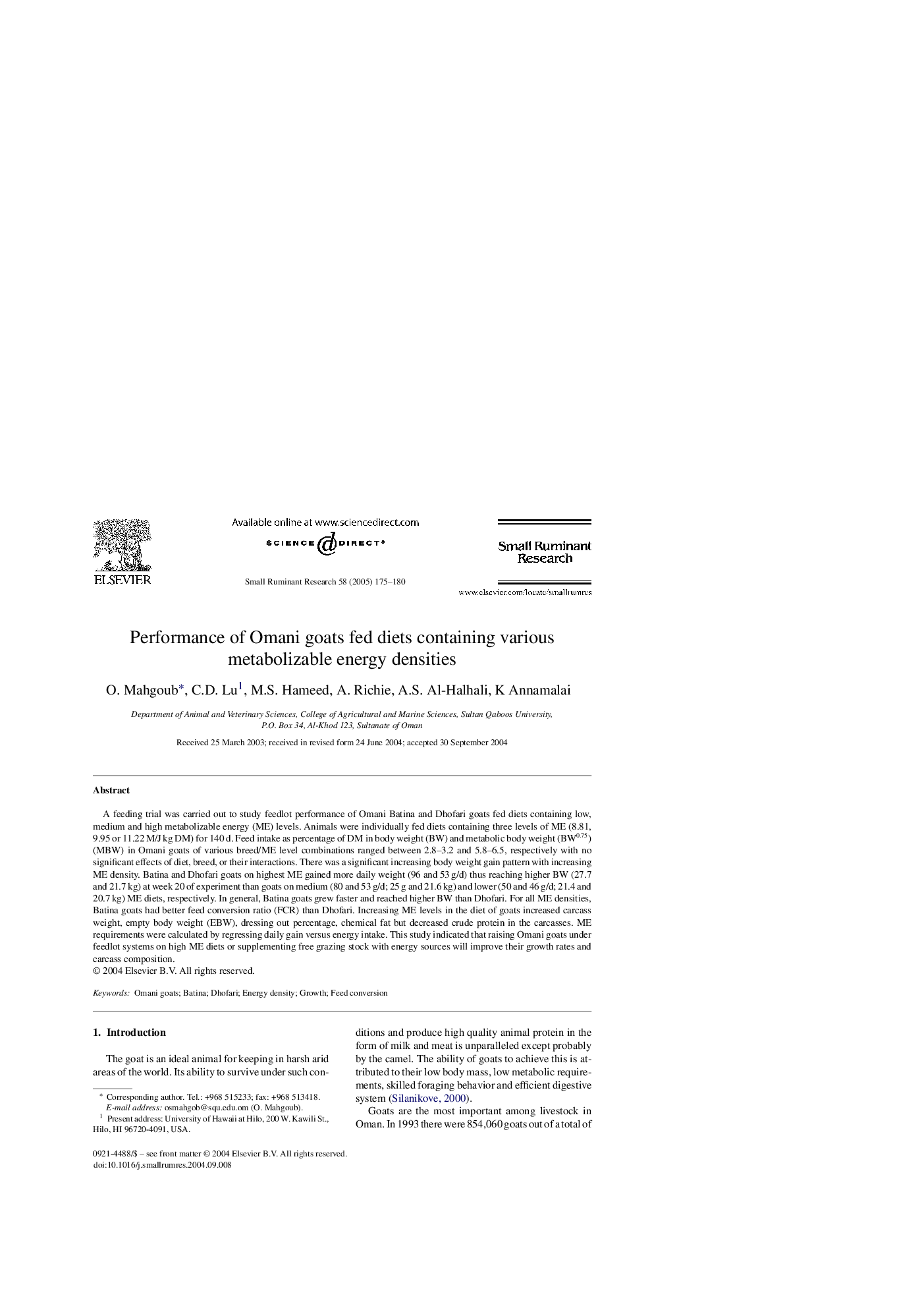| Article ID | Journal | Published Year | Pages | File Type |
|---|---|---|---|---|
| 8986689 | Small Ruminant Research | 2005 | 6 Pages |
Abstract
A feeding trial was carried out to study feedlot performance of Omani Batina and Dhofari goats fed diets containing low, medium and high metabolizable energy (ME) levels. Animals were individually fed diets containing three levels of ME (8.81, 9.95 or 11.22Â M/JÂ kg DM) for 140 d. Feed intake as percentage of DM in body weight (BW) and metabolic body weight (BW0.75) (MBW) in Omani goats of various breed/ME level combinations ranged between 2.8-3.2 and 5.8-6.5, respectively with no significant effects of diet, breed, or their interactions. There was a significant increasing body weight gain pattern with increasing ME density. Batina and Dhofari goats on highest ME gained more daily weight (96 and 53Â g/d) thus reaching higher BW (27.7 and 21.7Â kg) at week 20 of experiment than goats on medium (80 and 53Â g/d; 25Â g and 21.6Â kg) and lower (50 and 46Â g/d; 21.4 and 20.7Â kg) ME diets, respectively. In general, Batina goats grew faster and reached higher BW than Dhofari. For all ME densities, Batina goats had better feed conversion ratio (FCR) than Dhofari. Increasing ME levels in the diet of goats increased carcass weight, empty body weight (EBW), dressing out percentage, chemical fat but decreased crude protein in the carcasses. ME requirements were calculated by regressing daily gain versus energy intake. This study indicated that raising Omani goats under feedlot systems on high ME diets or supplementing free grazing stock with energy sources will improve their growth rates and carcass composition.
Keywords
Related Topics
Life Sciences
Agricultural and Biological Sciences
Animal Science and Zoology
Authors
O. Mahgoub, C.D. Lu, M.S. Hameed, A. Richie, A.S. Al-Halhali, K Annamalai,
